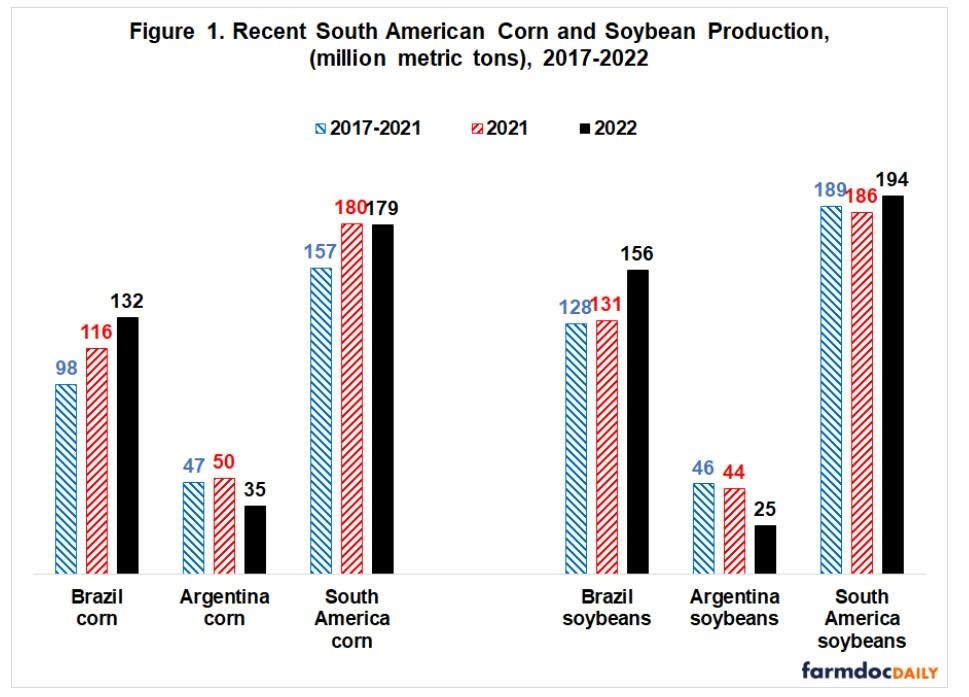By Harkirat Kaur and Philip Kaatz et.al

Photo 1. Ear rot damage in silage corn (Huron 2021). White and pink molds are caused by Fusarium graminearum and Giberrella zeae. Green molds are a result of Penicillium spp. Photo by Harkirat Kaur.
Mycotoxins in corn grain have long been studied and measured, but the presence of mycotoxins in silage corn has largely been ignored. Yet, the impact of mycotoxins on cattle will be from the total mycotoxin load in the ration, not just that from one component. Many dairy rations rely heavily on silage corn, therefore, quality issues in this important feed will be magnified in production aspects.
Fungi such as Aspergillus, Fusarium, Penicillium and Gibberella spp. in corn (Photo 1) cause accumulation of mycotoxins (toxic secondary metabolites) in corn ear and stalk. Cool and wet weather conditions around silking of corn tends to be favorable for growth of Fusarium graminearum and may cause high deoxynivalenol (DON or vomitoxin) accumulation. Feeding by birds, animals and ear damaging insects such as western bean cutworm (WBC) and European corn borer (ECB) can provide easy entry for the fungus and intensify infections. Increased flight of these insects and the failure of cry1F (a type of Bt protein) against WBC have aggravated ear injuries and aided infections.
Mycotoxins result in metabolic disruptions in livestock that eat contaminated feed, hence putting their lives and productivity at risk. Some toxins, especially DON, zearalenone (ZON) and fumonisins cause feed rejections leading to loss in milk production, hormonal imbalance, reduced reproductive performance and in some cases the death of animals. Mycotoxins can have serious economic consequences on farms if present in sufficient concentrations. But mycotoxins do not occur in isolation. Very often, various mycotoxins co-occur and their impacts on the health of livestock may be synergistic. This makes it difficult to determine safe levels (thresholds) for individual mycotoxins.
To understand the extent and gravity of mycotoxins in Michigan silage corn, the Michigan State University Cropping System Agronomy lab initiated a three-year survey of Michigan silage corn in 2019. A total of 122 samples from across 22 counties were collected during harvesting seasons of 2019, 2020 and 2021 and analyzed for 26 different mycotoxins. The weather conditions at silking in 2019 and 2021 were wetter compared to 2020.
Results from across three years corroborated the presence of mycotoxins in the state. All the samples tested positive for at least one mycotoxin. Deoxynivalenol was found to be positive in all 122 samples. At least 60% (in 2021) and 50% (in 2019) of the samples had DON concentrations greater than 1 ppm (threshold limit for dairy cattle), whereas in 2020 only 12% of samples had DON levels greater than 1 ppm (Table 1). 2021 had highest levels of DON across three years with two samples greater than 10 ppm and three samples greater than 5 ppm.
Table 1. Percentages of samples (n=122) with toxins at detectable and threshold levels (for dairy cattle). |
Toxin | 2019 | 2020 | 2021 |
DON1 (detectable) | 100 | 100 | 100 |
DON >1 ppm (threshold) | 50 | 12 | 60 |
ZON2 (detectable) | 100 | 35 | 100 |
ZON >0.4 ppm (threshold) | 26 | 0 | 0 |
Fumonisins (detectable) | 95 | 96 | 100 |
Fumonisins >2 ppm (threshold) | 5 | 16 | 0 |
Moniliformin (detectable) | 62 | 56 | 100 |
Moniliformin >0.1 ppm (threshold) | 0 | 0 | 3 |
Enniatins and beauvericin (detectable) | 100 | 100 | 100 |
Enniatins and beauvericin (high levels) | 0 | 0 | 0 |
Presence of >1 mycotoxins | 100 | 100 | 100 |
Presence of >10 mycotoxins | 100 | 92 | 96 |
1 Deoxynivalenol, 2 zearalenone |
Other frequently occurring mycotoxins in 2021 were ZON, fumonisins, and moniliformin. However, none of these toxins were found at levels greater than their respective threshold limits (2 ppm, 0.1 ppm, and 0.4 ppm, respectively for dairy cattle). In 2020 and 2019, enniatins and beauvericin were the toxins that occurred in 100% of the samples, but their concentrations were low. The second most frequently occurring category of mycotoxins in 2020 were fumonisins, with eight samples at levels greater than threshold (2 ppm). Fumonisin levels were greater than 10 ppm in two samples. Zearalenone occurred in significant amounts only in 2019, with three samples greater than 1 ppm.
Co-occurrence of mycotoxins was reported in all the samples. On average, most of the samples tested positive for at least 10 mycotoxins in 2021 with a maximum of 13 in one sample. In 2020, four samples tested positive for more than 20 mycotoxins and each sample tested positive for at least seven different mycotoxins. Mycotoxin co-occurrence was most pronounced in 2019 of all three years with a maximum of 24 mycotoxins detected in a single sample.
Overall, the concentration and frequency of mycotoxins were observed to be dependent on regional weather conditions around silking in corn. In 2020, since growing season was drier and rainfall was more sporadic compared to 2019 and 2021, lower frequency and concentration of mycotoxins was observed. Highest DON and ZON concentration found across tested samples was lower in 2020 (1.4 and 0.07 ppm) compared to 2019 (5.7 and 2.5 ppm) and 2021 (18.4 ppm and 0.23 ppm, respectively). The only toxin that occurred in higher concentration in 2020 than in 2019 and 2021 was fumonisin, with highest concentration of 10.6 ppm in 2020. Fumonisin accumulation occurs due to F. verticilloides infection which is favored when the environment is warm and dry around silking whereas DON is the dominant toxin under cool and humid conditions.
Across three years, samples collected from thumb area (Huron and Sanilac counties) consistently had the highest mycotoxin levels. This would probably be due to cool and humid weather, and consistently higher WBC flights in the area which may have contributed to ear wounds (Photo 2), therefore, more ear rot infections, and eventually higher mycotoxin accumulation.

Photo 2. Corn ear and husk wounds showing western bean cutworm damage (Huron 2021). Photo by Harkirat Kaur.
The question producers ask is, “What should I do with this information?”
Although all the samples tested positive for multiple mycotoxins, levels of individual toxins were not always above threshold levels (Table 1). Besides that, some of the tested mycotoxins do not have established threshold levels or they might be lower due to synergistic negative impacts of mycotoxin co-occurrence. Therefore, mycotoxin levels must be taken into consideration while making management decisions to prevent any risks to livestock health.
Since there are few ways to overcome mycotoxins once they are present in corn, prevention of mycotoxin accumulation in the field using integrated pest management approach is essential. These include hybrid selection, timely planting, fungicide application, scouting and spraying for ear feeding insects, and timely harvest. Recent research at MSU has shown that hybrid selection (i.e., use of ear-feeding insect protection trait) reduced insect feeding (70-85%), ear rot infections (70-75%) and eventually mycotoxin accumulations in silage corn at locations with high insect pressure. Furthermore, hybrids with resistance against stalk rots (in addition to ear rots) can also help alleviate the accumulation of mycotoxins. Research shows a significant amount of mycotoxins in silage corn can be contributed by stalk rots as well. Fermentation processes in bunker silos will not break down mycotoxins from an already infected silage corn which makes the field management even more crucial.
We thank Michigan farmers for their continued participation in this study. Their cooperation was vital in developing this dataset on mycotoxin occurrence in Michigan silage corn fields. A detailed interpretation of these data along with small plot research is underway and will be soon available to help farmers identify the management decisions that can lower mycotoxin risk and improve animal performance.
Source : msu.edu